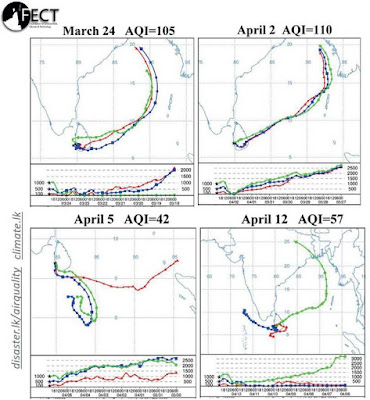Curfew brings cleaner air – and a few questions
The Sunday Times
News
With the pandemic having brought the country to a standstill, official indicators are that the environment is in the process of healing – but there are puzzling signs of air pollution spikes.
News
With the pandemic having brought the country to a standstill, official indicators are that the environment is in the process of healing – but there are puzzling signs of air pollution spikes.
Since March 11, the country’s Air Quality Index (AQI) has decreased to a “moderate” level, with air pollution 30 percent less compared to the same time last year, the National Building Research Organisation’s Senior Scientist, Sarath Premasiri, said.
Despite the curfew, air quality is being measured through an online monitoring service, especially in Colombo, Anuradhapura, Kurunegala, Vavuniya, Jaffna, and Puttalam.
“One of the main reasons for the reduction of air pollution is the fact that no vehicles are functioning on roads and that has created a huge impact on the AQI of Sri Lanka,” Mr. Premasiri said.
Pollution levels normally decrease between May to August due to monsoonal wind speeds, he added, and this year the added benefit of lockdown conditions should make the air even fresher.
Other researchers have, however, spotted a puzzling movement in the AQI during the past few days.
According to disaster.lk, the AQI in Colombo shot up on April 2 to 175 and although it dropped the following day to about 136, this denotes an unhealthy level of air quality despite the absence of vehicle pollution.
The Principal Scientist at the Foundation for Environment, Climate and Technology, Dr. Lareef Zubair, said there was much speculation about why the AQI was still high in certain areas despite the island-wide curfew.
“The AQI in America and China has certainly decreased but in Sri Lanka, these numbers are not as low as they could have been,” he said.
Dr. Zubair said one possible reason for the anomaly was that as well as the fact that some industrial activity is still occurring, farmers are currently engaged in burning the remnants of the last harvest, a normal practice during March.
“Last year, during November 3-5, the AQI shot up to 170 on two consecutive days and that was attributed to transboundary pollution [burn-offs on farms],” he said.
This and pollution emitted from the Norochcholai coal-fired power plant are the possible reasons for the recent spike in the AQI, he said.
While agreeing that burn-offs are probably affecting pollution levels, climate researcher Dr. Vidura Ralapanawa said he had observed a significant and continuing spike in the index in the Puttalam district during the last week of March, and he believes this can be only attributed to emissions from the Norochcholai power plant.


Comments
Post a Comment